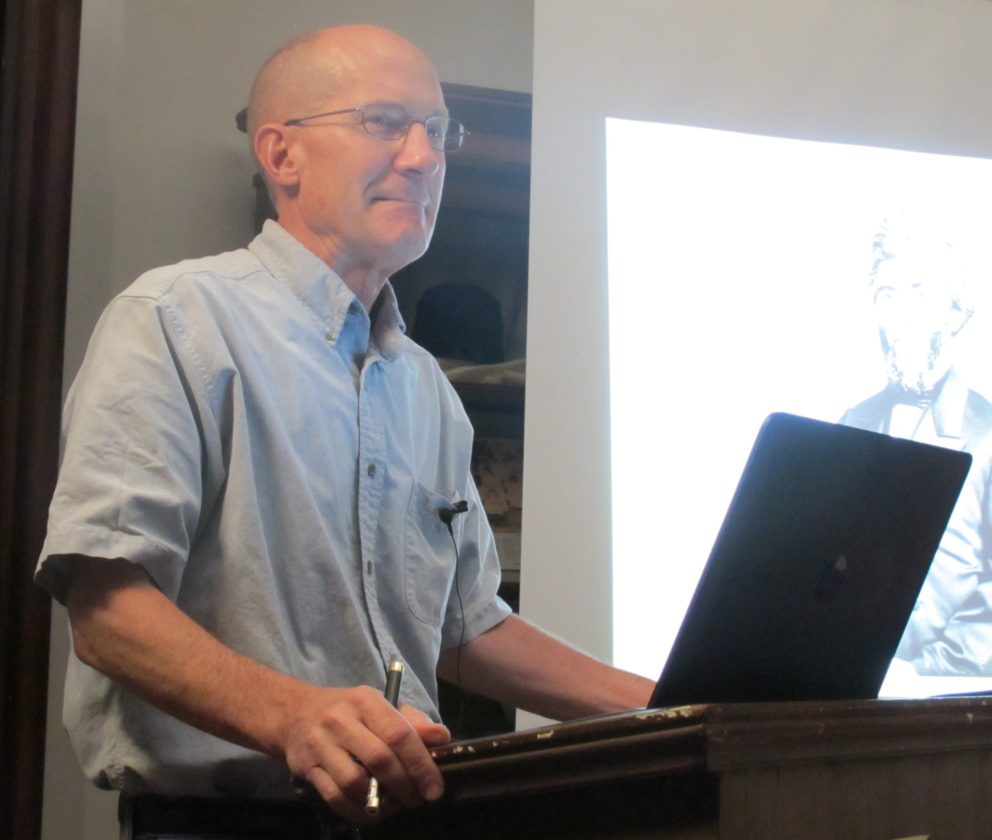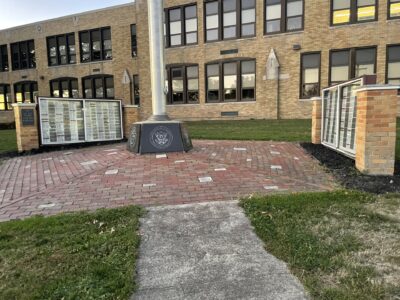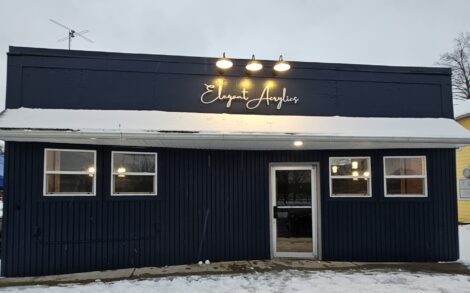Fenton Dig Focuses On Foundations

Trying to discover where a building once stood when that structure hasn’t been upright for almost 100 years isn’t easy.
Discovering where the former carriage house and a section of the west side of the Fenton Mansion once stood is what Dr. Thomas Greer, Walnut Grove archaeology project manager, worked on this summer during the sixth year of the archaeological dig in Walnut Grove, which is the name of the park area that surrounds the former residence of Gov. Reuben Fenton.
During the summer of 2012, the Fenton History Center, in conjunction with the State University at Buffalo, conducted an archaeological survey searching for the lost landscape of Fenton’s estate. Evidence of several outerbuildings was discovered and more than 700 artifacts, some Fenton related, were collected. Starting the summer of 2013, the excavation continued under the direction of Greer, a Fenton trustee, with participation of Jamestown Community College and oversight by University of Buffalo. Thousands of artifacts have been collected, some household and some farm related.
Greer said this year they had a different goal than in past years of the archaeological dig. He said this year they were more focused on finding foundations on the grounds of the Fenton Mansion than finding old artifacts.
For the first time during the sixth year of the archaeological project, the dig took place on the west side of the mansion. While digging, Greer said they discovered a well. He said they dug the well until is was about six feet deep and then decided to not go any further because of the potential danger it could create if someone accidentally fell into it. He added that after they filled the well, they traced its outline with bricks along the ground so they would know where it is located.
Greer said while digging on the west side of the mansion, they discovered the foundation for an addition that is no longer standing. He said the addition was included on a Sandborn Insurance Map that dates back to 1902 and a map from 1915 discovered in the city archives. He added the addition was gone by 1926, according to another insurance map.
Greer’s theory on the addition is that it might have been the first indoor restroom installed during the late 1890s. He said there is still evidence that supports that the former privy, or outhouse, was attached to the mansion, with no entrance from inside the house to the room, that is still a part of the mansion today, which underwent remodeling in the 1930s.
This year for the first time Greer said they also be dug around the area of the former carriage house, which was located behind the mansion toward the east. He said the carriage house was 40 feet by 60 feet and was torn down in 1919 when the city purchased the mansion.
Greer said they found different stone sections used for the foundation. He said they uncovered three foundation corners of the “L” shaped building, which would have had six corners.
Greer said they didn’t find as many artifacts this year as they did in past years. However, he said they did find a metal Civil War soldier figurine, a flint stone and a piece that belonged to something bathroom related, which could have either been from a sink or a toilet.






